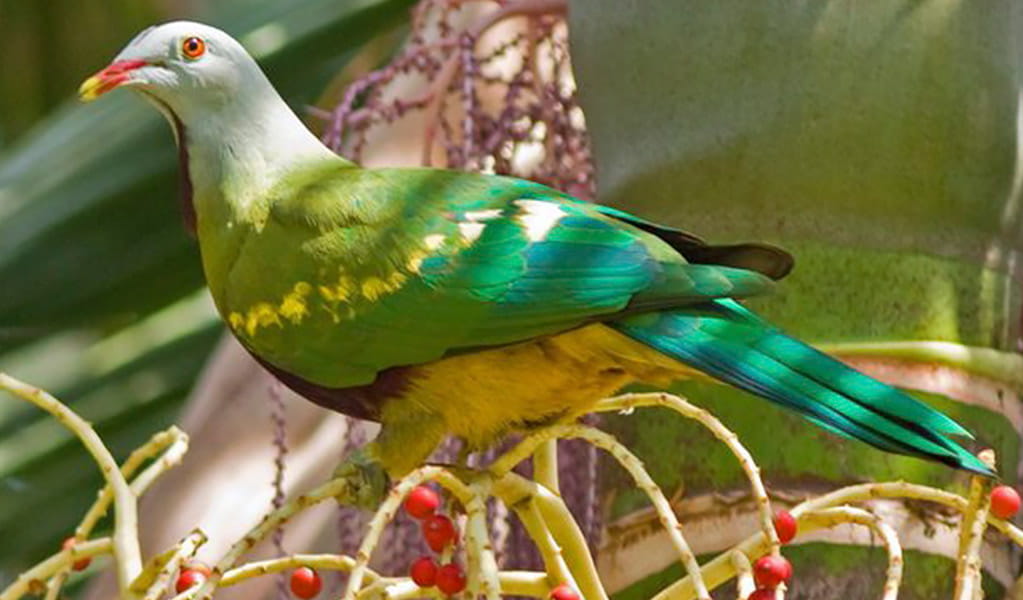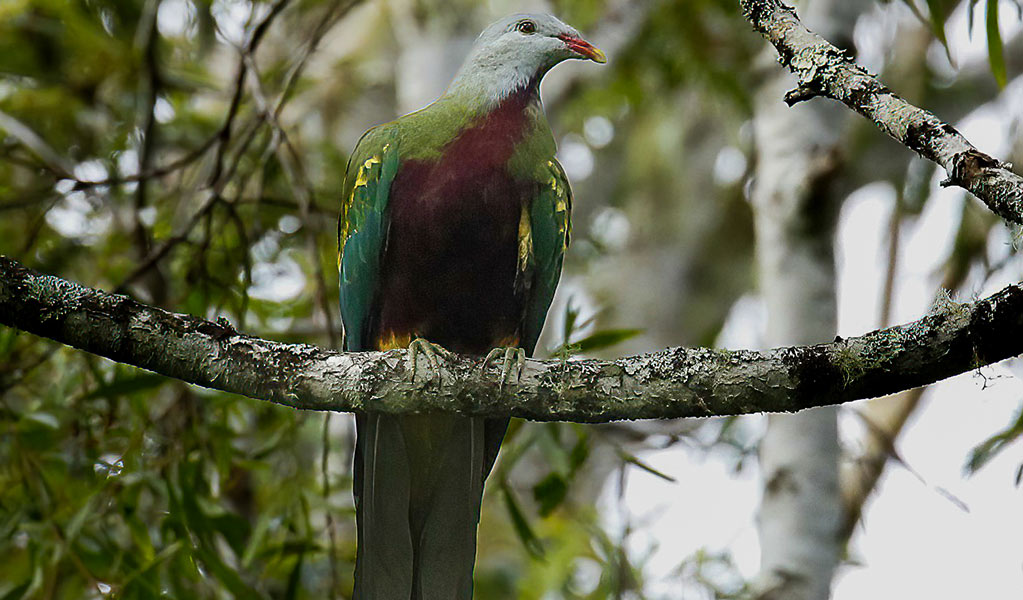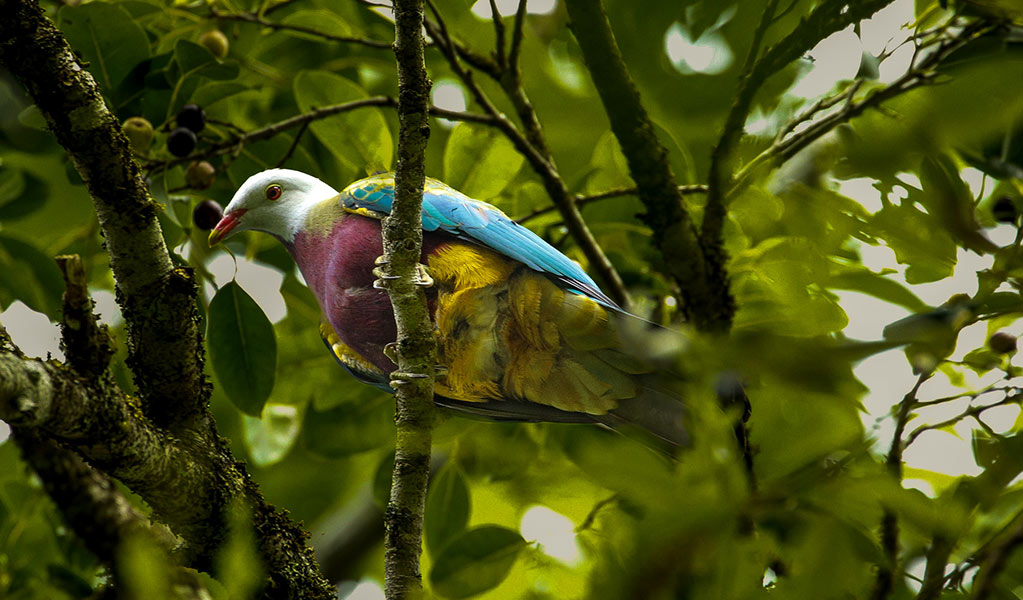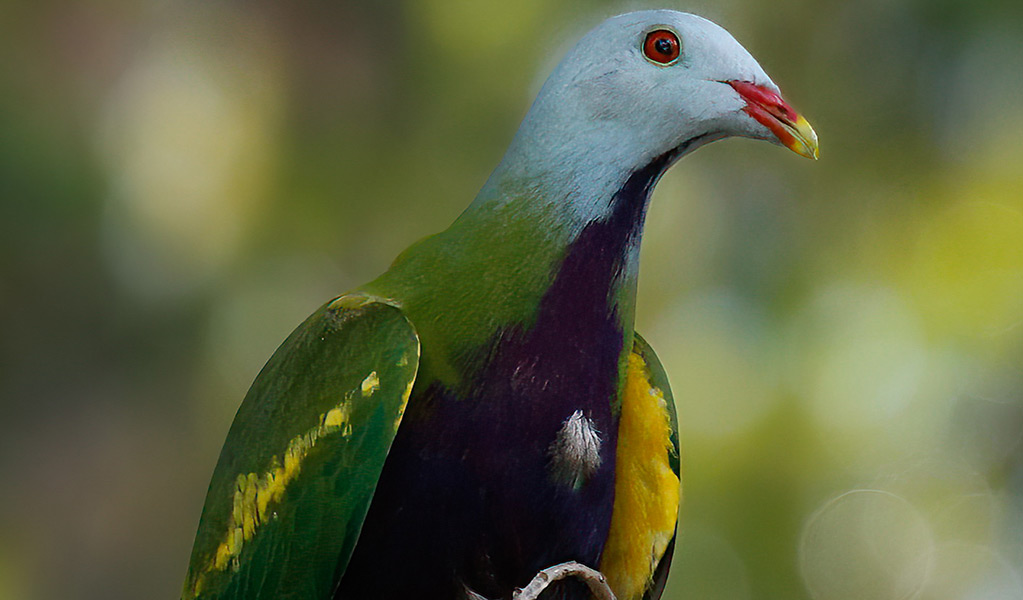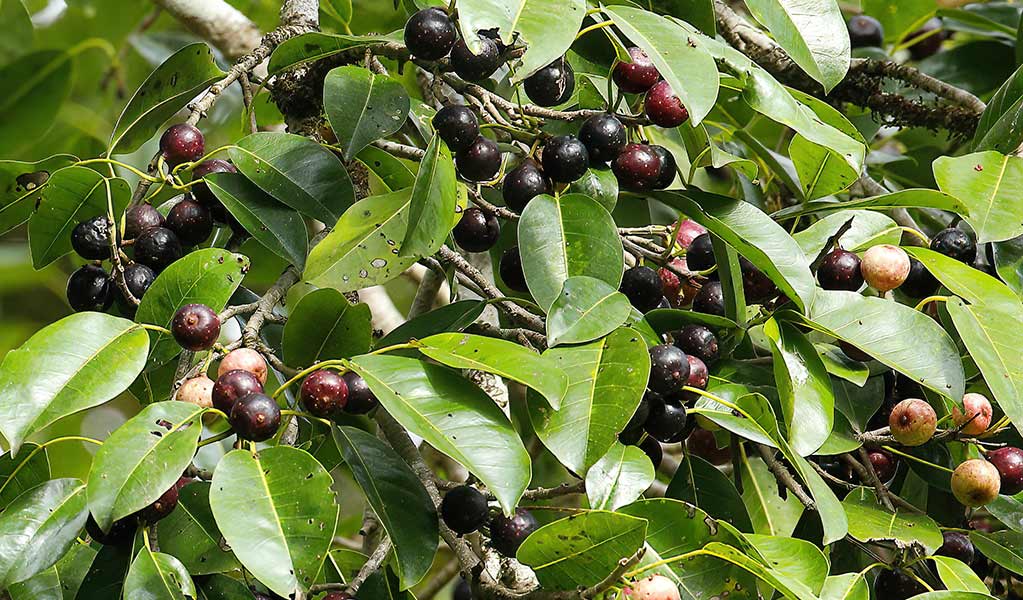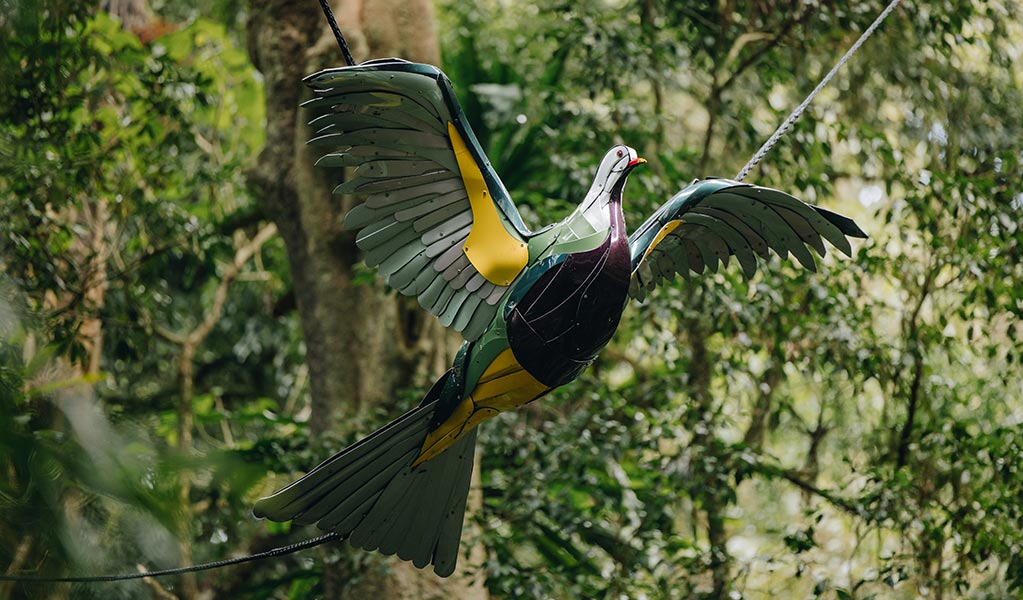Wompoo fruit-dove
The wompoo fruit-dove is a marvellously multi-coloured pigeon that makes its home in rainforest along coastal ranges from mid-north NSW to southern Queensland. It’s protected as a vulnerable species in NSW.
Magnificent but reclusive
While it has a pale grey head, the rest of the body is a riot of colour. Its back and wings are shaded a rich green, with a striking yellow band across each wing. The breast and belly are a plum-purple colour, and the underparts are yellow.
Despite their large size and vibrant range of colours, wompoo fruit-doves are by nature, rather reclusive birds. This can make them devilishly difficult to actually clap eyes on in the rainforest canopy. To tip the odds in your favour for finding one of these magnificent birds, check out our expert tips.
4 tips for spotting wompoo fruit-doves
Listen to a wompoo fruit-dove's call
Audio © David Stewart Naturesound
A seedy business
Wompoos live semi-nomadic lives, foraging across a large home-range for fleshy seasonal fruits as they ripen throughout the year.
Unlike many pigeon species, the digestive system of wompoo fruit-doves lack a hard-walled gizzard, so they can’t grind up and digest the hard seeds of the rainforest fruits they eat.
This is excellent news for rainforest vines and trees as their seeds are couriered across the landscape and deposited far and wide, one dove-dropping at a time. This important ecological service helps to maintain the genetic health of small and often fragmented rainforest communities.
Predators
Being colourful can be a dangerous business. Keen-eyed aerial predators like the peregrine falcon and grey goshawk scan the forest canopy for the bright plumage of plump fruit-doves too preoccupied with scoffing fruits to notice the danger lurking above.
It’s likely this is why wompoos never fly above the rainforest in flocks like the more mutely coloured top-knot pigeon and white-headed pigeon. When they do fly, it’s with audibly heavy wing beats and often at such astonishing speed that their passage creates a sound like ripping fabric.
Animal facts
- Common name
- Wompoo fruit-dove
- Scientific name
- Ptilinopus magnificus
- Conservation status in NSW
- Vulnerable
Threats
Wompoo fruit-doves were once far more abundant and widespread. Clearing of lowland subtropical rainforests during the 19th and early 20th centuries means today their main stronghold in NSW is in remnant rainforest along the Great Eastern Escarpment.
Key threats to the ongoing survival of this vulnerable species include habitat degradation from wildfire and the loss of large rainforest fig trees, especially on private land. The loss of even a single large fig tree reduces availability of high-quality fruit for dozens of local fruit-doves.
You might also like
-
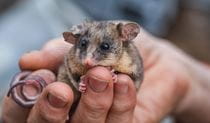
Protecting threatened species in parks
Around 84% of the approximately 900 threatened species in NSW are found in our national parks and reserves. Find out what we're doing to protect threa...

